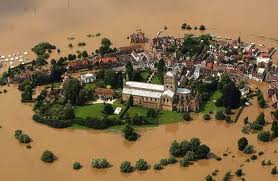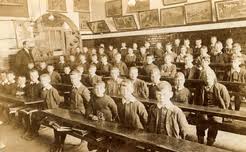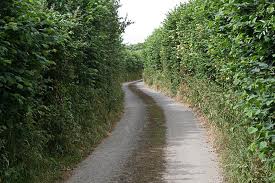The tide recedes, leaving folklore flotsam and jetsam in its wake…
The floods have finally subsided, and it is time to take stock. In all, we have received 32 emails, phone calls and letters; an astonishing amount. Each relates to an incident so strange that, in any other town, it would have possibly led to national press coverage. Yet, as always, even the media claiming an interest in unexplained phenomena have studiously avoided taking up the thread.
By far the majority of the incidents relate, in some way, to Lara Lee (passim.), now firmly re-established as ‘The Siren of Lethmachen’. We received 10 sightings of a woman standing waist deep, unmoving and with her back to the towpath the runs through the town centre. The woman did not heed any call to her, and, we are informed, when a man identified as Patrick Nightingale waded in to reach her, the Lethe rose about him, knocking him from his feet. When the water calmed moments later, the woman had disappeared. The police called to the incident could find no evidence of her. A further 9 sightings relate to an untraceable voice heard singing near areas of the town that had been particularly affected by the flood, especially where defences had been breached, or where individuals found themselves in danger. A number of reports make a connection with the legend of Lara Lee, although, to our knowledge, the siren has been silent in all previous accounts. Three reports, however, connect the singing to Teri Ann Miller (passim.). Are we witnessing folklore in action, with two Lethmachen icons in the process of forming a composite figure? Or perhaps the one has always been the other? Or is this simply a sobering reminder that ‘hard is the fortune of all woman kind’, especially when young, beautiful and confined to town as small as ours? It is not, perhaps, surprising that more than one female spook should issue a plaintive song…
Related to this, a final, and intriguing, set of sightings are concerned not with Lara Lee, but Oliver Brooks, one of her supposed victims. A man fitting Mr Brooks description was seen by numerous witnesses drinking in The Green Hive, a town centre pub. He looked ‘tired and half-drowned’, and did not speak, even when addressed by name. On hearing this, Gary Poole, a friend of Brooks, had the wit to request a copy of the relevant CCTV footage from the camera set up outside the pub to deter trouble-makers. His request was met with an apology: ‘Due to the flooding, CCTV cameras in this area were not able to function. We return your request fee, and will attempt to ensure that this technological failure is not repeated.’ We contacted technology expert Jon Hawkes, who noted that such faults have never been reported in any other area of Britain during the last 10 years. The water outside The Green Hive had risen enough to warrant sandbags, yet Gary Poole estimates it could not have been more than a few inches deep.
A very strange incident in Lethmachen Public Baths. The water in the pool was seen to rise during the flood, leaving the pool-side an inch below water. No explanation could be found. But (unfortunately?) Sleepy Simon (passim) was slumbering fast; no reports concerning him were received.
We have unconfirmed reports that police received numerous phone calls from parents who had found their children soaking wet in their beds in the morning. No surprise there, one might think. The parents were, however, shocked to discover the now familiar detritus from the flood amongst sheets and pyjamas: silt, twigs, paper and assorted rubbish. The children seemed distressed, but this was put down to the temporary closure of their school due to damage from the Lethe.
Finally, we have the incidents at Flinchley, the nearby Cottingley residence, and The Rise in Lethmachen itself, as reported above.
Full details of sightings, and names of correspondents who do not wish to remain anonymous, will be sent out on request.
As always, we will keep you informed of any developments….




